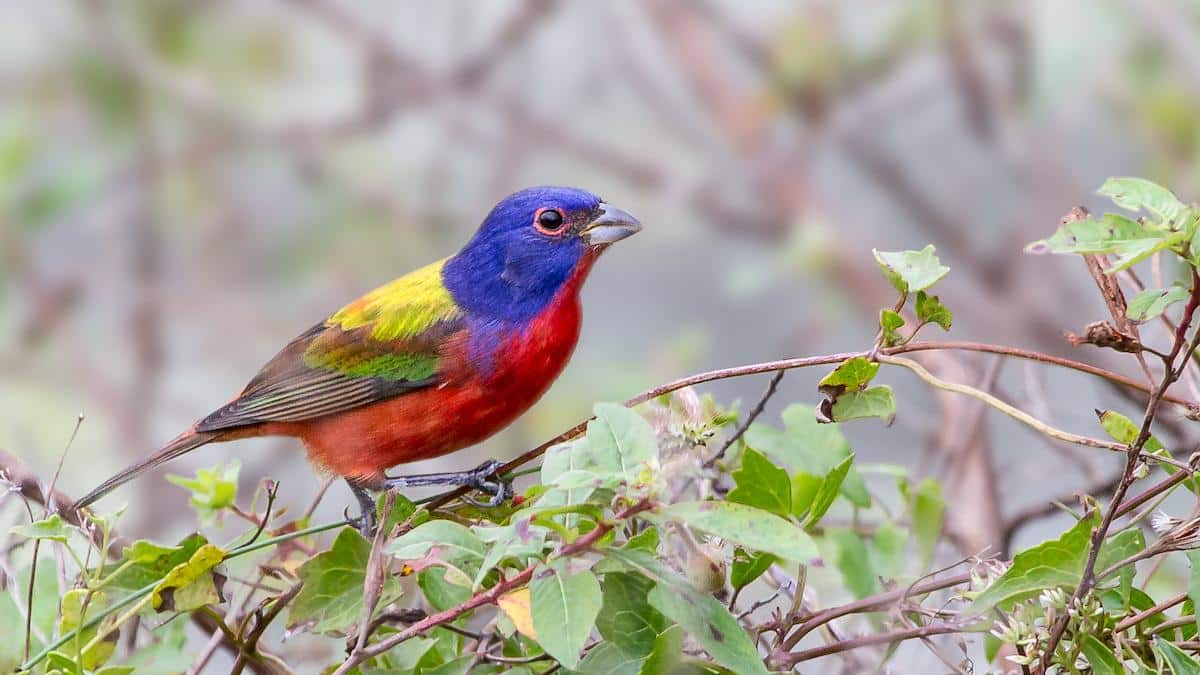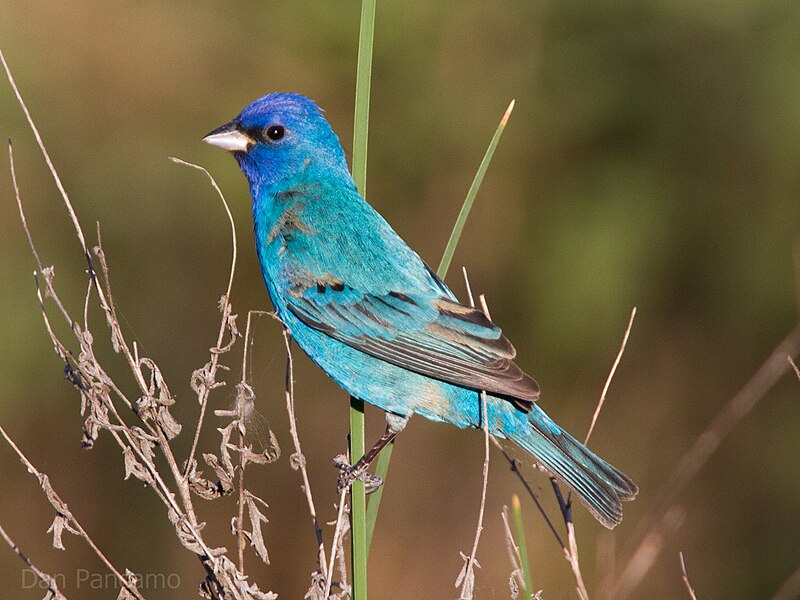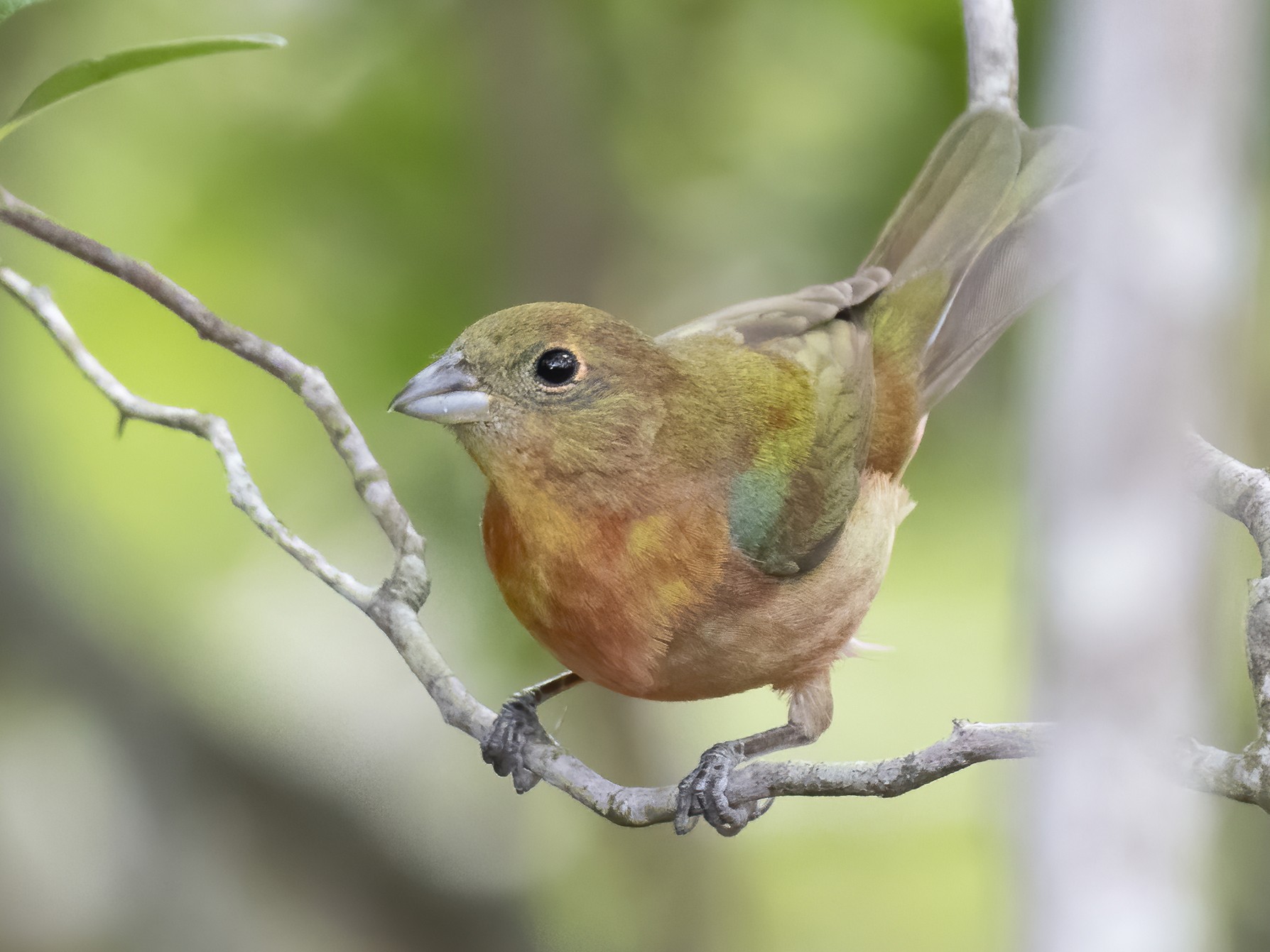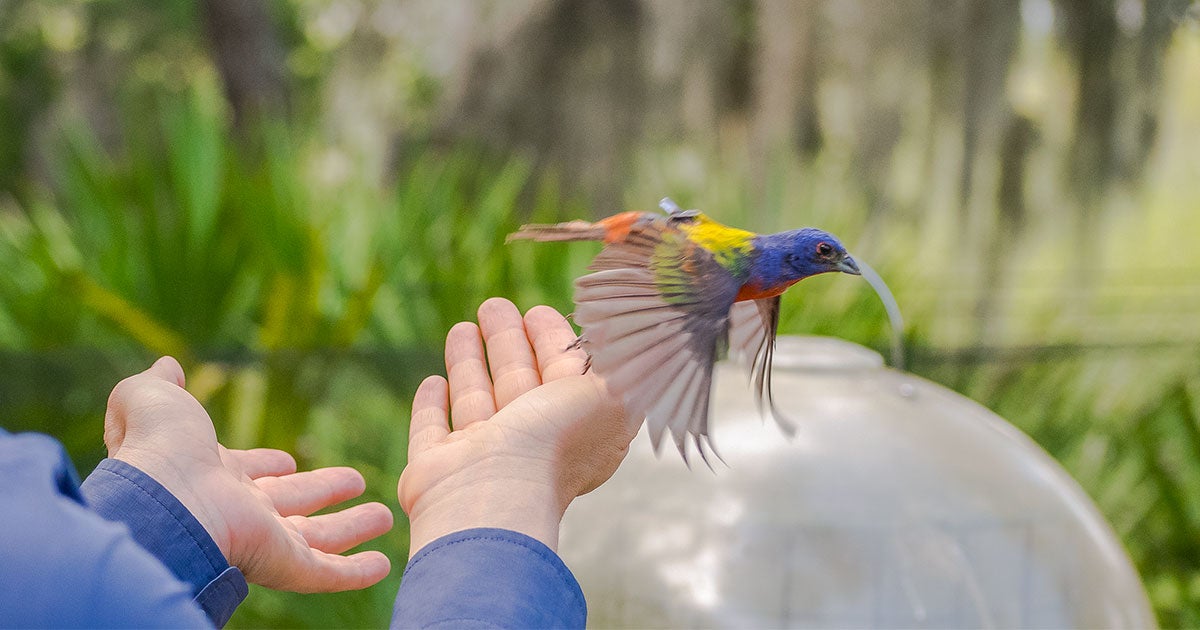When conservation ecologist Clark Rushing set out to study Painted Buntings a few years ago, he stumbled on an enigma: where exactly the birds go in winter and in what numbers. Each piece of evidence seemed to raise more questions than it answered, deepening the migration uncertainty surrounding the dazzling—yet declining—songbirds.

Painted Buntings are well-documented in their breeding territory in dense thickets throughout the southeastern United States. They even alight on feeders, the males thrilling backyard birders with their bright swooshes of red, blue, and green,seemingly painted by a preschooler (females, though not as colorful, are a striking green).
But ornithologists have a weaker grasp on their journeys come fall. They know that buntings head to south Florida, as well as the Bahamas and Cuba, but with the exception of Florida, there are no good annual surveys like the Christmas Bird Count. What records do exist are often conflicting. One study from a decade ago that combed historical data found that in the Bahamas, for instance, they were described variously as “common,” “an uncommon winter visitor” and “readily found in winter.” The same was true in Cuba.
Deciphering the buntings’ winter whereabouts, and their relative abundance, could hold the key to understanding recent declines in the eastern population (a separate western population of Painted Buntings in Texas, Oklahoma, Louisiana, and Arkansas is considered more robust). Those declines have been uneven. Painted Bunting numbers in the Carolinas are stable or even gaining, for example, whereas in Florida and coastal Georgia, they are falling.

“Our goal is to see if there is some sort of broadly consistent pattern that relates the populations that are declining to where most spend the winter,” says Rushing, an assistant professor of wildland resources at Utah State University. “It’s a way to at least generate hypotheses. If we saw that declining populations were more likely to spend winters in Cuba and stable populations are going to South Florida, that might be suggestive of whether there are problems in Cuba.”
Since 2017, Rushing, Smithsonian Migratory Bird Center biologist Scott Sillett, and Cornell Lab of Ornithology research associate Viviana Ruiz-Gutierrez have attached 180 geo-locators to Painting Buntings in the four southeastern states where the population breeds. So far, they have recovered nearly three dozen of the devices, which are essentially light sensors that attach to the bird via a miniature backpack, secured by a tiny harness that fits around its legs. The sensors capture the time of sunrise and sunset, which translates to the birds’ relative latitude and longitude within approximately 100 miles. They’re not as precise as GPS tags, but those would be too heavy for the buntings, which weigh the equivalent of three quarters.
Painted Buntings are an ideal species to study, given their penchant for visiting bird feeders, Rushing says. “We can sit next to these feeders and catch dozens at a time.”

Aaron Given, an assistant wildlife biologist for the Town of Kiawah Island in South Carolina, agrees. He has banded Painted Buntings there for his own research over the past decade and is now volunteering on Rushing’s project. “For the most part, adult birds are very faithful to an area,” he says. “If I catch an adult bunting with an established territory, I am likely to catch it in the same yard at the same bird feeder the following year.”
In recent years, North American biologists have turned their attention to the fate of migratory birds like the Kirtland’s Warbler in their wintering grounds. Scientific models show that deforestation and drought will worsen across the tropics in the coming decades. Increasingly violent hurricanes that destroy winter habitat are another concern. And because of their distinctive plumage, Painted Buntings are particularly vulnerable to trapping for the pet trade, especially if enforcement of wild bird protections is lacking in their winter territory.

Right now, the scientists are tabulating data they recently got back from the geo-locator manufacturer as they prepare to attach more devices to the birds this spring and summer. Ultimately, the researchers hope that by pinning down where buntings go in winter, they can target further monitoring and conservation efforts in strategic locations. Already, they have established relationships with ornithologists in Cuba.
Besides wanting to help conserve their habitats, both Sillett and Rushing confess to another reason they’re studying Painted Buntings. “They are just so fabulous,” Sillett says. “It’s probably the most spectacularly beautiful migratory songbird that breeds in North America.”
The Painted Bunting thus makes a perfect ambassador. “We thought they were a great species in terms of outreach and education about issues related to migratory bird declines,” Rushing says. “People just gravitate toward them.”






